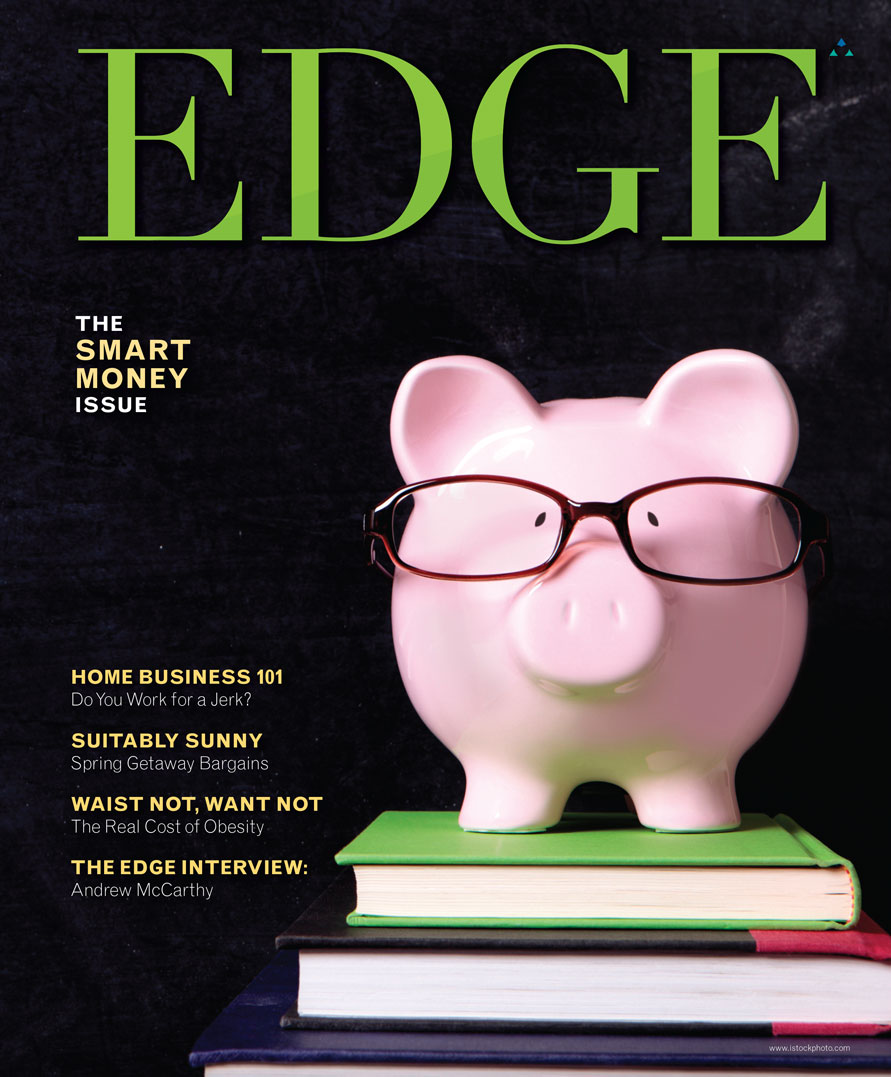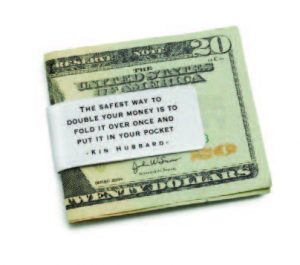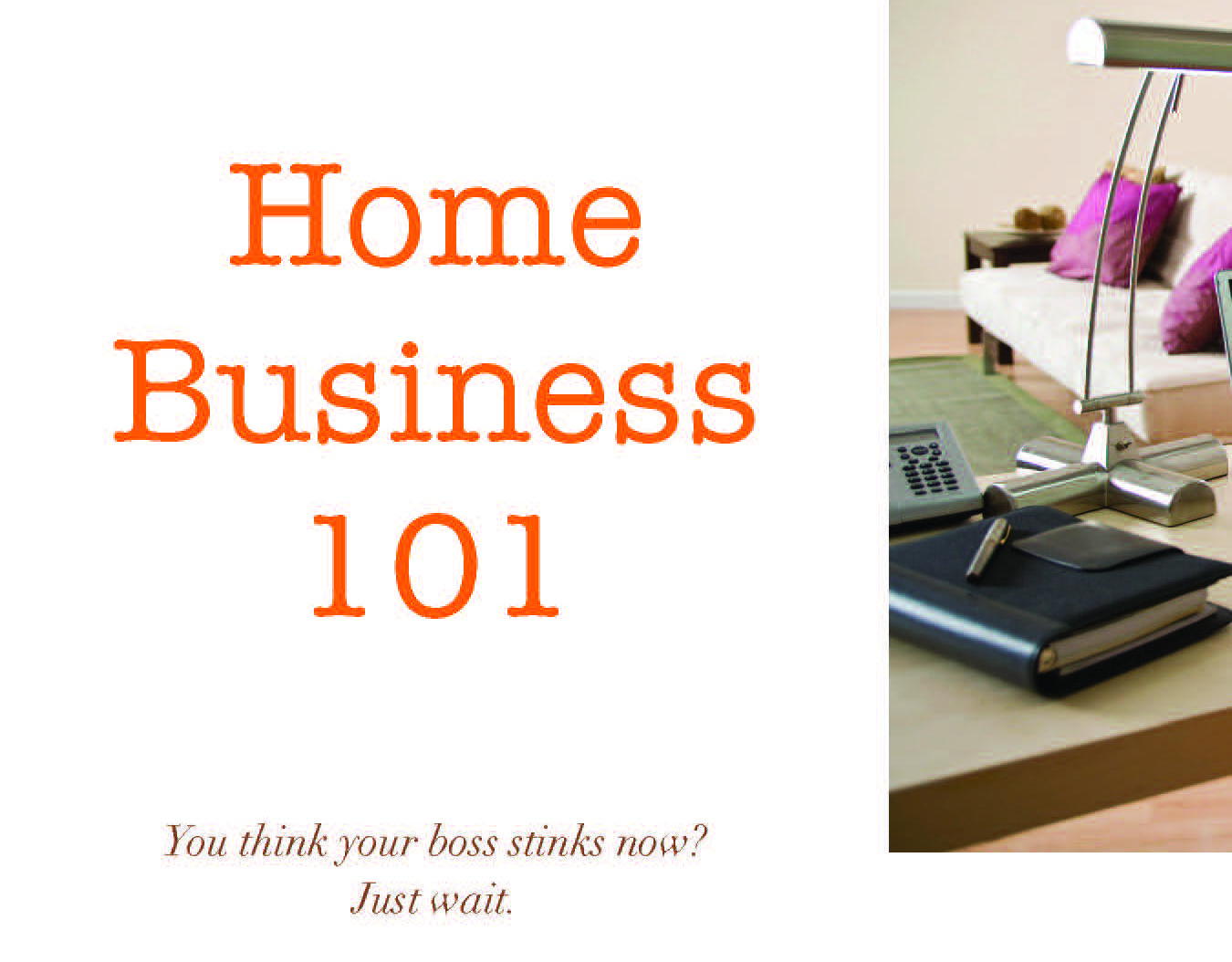Picking the perfect summer camp has never been easier…which is why you need to start NOW.
By Christine Gibbs

Photo credit: iStockphoto/Thinkstock
How nice it is, in a world that moves at fiber-optic speed, that some things never change. Summer sleepaway camp has been a rite of passage for countless young Americans, stretching back generations in some families. In fact, 2012 marked the 150th anniversary of worldwide camping.
There’s just one thing. Replicating the summer camp experience we enjoyed for our own children (or in some cases grandchildren) isn’t the no-brainer it used to be, especially if you want to build a young person’s mind and body. In this age of specialization, we must assume the exhausting responsibility of matching our children’s interests, likes and dislikes—and perhaps their budding talents—to the camp that offers the greatest chance to learn, to grow and to thrive. All for the pleasure of writing out a large check and then fighting back the tears as they roll away for two to ten weeks of parentally unsupervised fun.
Pick the wrong camp, and not only won’t you ever hear the end of it, your kid will probably find some clever way to work it into your eulogy. Pick the right camp, and at the end of the session your child may grant you a grunt of approval when you ask how it was.
The pressure to get into that “right” camp may not be quite as intense as getting into the right college, but given the ever-expanding choices on top of variables on top of more choices, the process may be even more daunting. That is especially true for a small group of elite camps, such as the by-invitation-only program at Johns Hopkins University’s Center for Talented Youth, which is rigorously selective based on standardized test scores. Really? Yes, really.
Camping in the 21st Century
For those families with mere mortal offspring, the first order of business is deciding between the two types of summer sleepaway camps. There are the old-school Hello, Muddah, Hello, Faddah operations, which feature time-honored and universally shared activities (from hiking and canoeing to complaining about the grub and torturing the counselors). And then there are the specialty camps, which cater to almost every conceivable skill and interest. Is your daughter interested in robotics? Is your son’s golf swing in need of a tune-up? There are several camps within a couple of hours drive that can handle that. Are you arguing with your child about which camp is the right camp? You might consider a debate camp. Really? Again, yes, really.

Photo credit: iStockphoto/Thinkstock
In days past, dating all the way back to the early 1900s, the vast majority of summer sleepaway camps were of the traditional variety: scouting-, religious- or sports-oriented. Today there is a camp for practically every special interest, not to mention many that target special needs ranging from weight loss to autism to terminal illnesses. There are language and travel camps, both domestic and international. There are camps for all of the arts—fine art, music, writing and performing. There are science, environmental and technical camps galore. Stevens Institute in Hoboken offers its ECOES program (Exploring Career Options in Engineering and Science) and even Apple opens some of its stores to offer free fun summer programs focusing on its own brand of electronic devices.
Sports camps have become an industry unto themselves. They specialize in activities such as golf, soccer, tennis, field hockey, competitive swimming, scuba, sailing and even rock climbing. There are numerous camps whose primary focus is to fast-track budding athletes (some as young as 8 or 9) toward some future Olympics. Others aim at building the skills necessary to secure a college scholarship in sports ranging from softball to sculling. There are football camps for quarterbacks only…which begs the question, who are they throwing and handing-off to? These camps offer fun and games with a serious side; they separate the wheat from the chaff by offering an atmosphere of competition, achievement and success.
Serious, success-driven camps are hardly limited to sports. Future Stars Camp in Warminster, PA, the Superkidz Kamp in Montclair, NJ and Stagedoor Manor—a 26-year old theatrical training camp in the Catskills which counts Natalie Portman, Mandy Moore and Robert Downey, Jr. among its alumnae—are hardcore performing arts boot camps.
And yes, there are actual boot camps now. Often geared toward working with troubled teenagers, they push kids to learn teamwork and also self-reliance in a quasi-military/wilderness environment. They tend to temper their intense work schedules with more traditional recreational camp-type activities such as swimming, hiking and just plain horsing around.
Fortunately, there are plenty of summer camps at the other end of the seriousness spectrum. The Quaker-run Dark Waters Camp in Medford, NJ encourages a non-competitive philosophy with a wide array of arts, crafts and outdoor activities. Similarly, a more balanced agenda is offered at the Stokes Forest Music Camp, where the John J. Cali School of Music at Montclair State University counterbalances serious music sessions with environmental studies and recreational activities. Statistics compiled by the American Camp Association (acacamps.org), indicate that 57% of their accredited camp membership focuses on team-building and more than half provide opportunities for community service, such as area cleanups, recycling, and volunteerism at nursing homes and hospitals.
Dollars and Sense
According to industry statistics compiled by the National Camp Association, U.S. camps rake in an annual $11 billion in business. More than 11 million American children last summer were tearfully bused or otherwise delivered by their parents to the 12,000 camps spread throughout the nation. Of these, about 60% are of the sleepover variety, two-thirds are run by non-profit organizations, and the remaining third are privately owned for-profit businesses. About one in five camps receive American Camp Association accreditation, which means they have met 300 health and safety standards.

Photo credit: iStockphoto/Thinkstock
This is worth thinking about when narrowing down your choices. Parents are often surprised to learn that, unlike pre-school, there is no government agency that monitors camp conditions and standards. And although most camps are small businesses, they employ more than 1.2 million adults in various capacities such as camp counselors, activity leaders, program directors and support services personnel, so it is something more than a cottage industry.
Not surprisingly, recent economic conditions have impacted consumer spending on summer camps. The good news is that the vast majority have been able to maintain their high standards, with some actually stepping up their games and becoming more competitive. The general consensus about the tangible and intangible benefits of the sleepaway camp experience has kept the industry going. This combination of forces has also benefitted day camps, which are less expensive and often more specialized than sleepaway camps.
Sleepover fees can vary from about $200 to upwards of$800 per week per child. Many camps offer financial assistance of one kind or another—including scholarships (aka “camperships”)—so if you need it, don’t be shy about asking what programs are available.
At the higher end of the scale are camps such as Camp Robindel for girls, located in Moultonboro, NH. At just under $11,000 for the summer, it offers yoga, horseback riding, paddle boarding, surfing, and knee boarding as well as bi-weekly themed meals that are a far cry from the unappetizing camp fare of yesteryear. For boys, a fee of$10,750 for Camp Skylemar in Naples, ME covers a five-hole golf course, eight tennis courts, and three indoor-and-outdoor basketball courts—plus all that nature has to offer. Yet even at the lower end of the scale, there are plenty of specialty sleepaway camps that will match your child’s passions and interests. Their offerings range from computers and technology to fashion and fitness, to the culinary or performing arts.
As much as we want our children to go to the best possible camp, we also want to negotiate lower fees and expenses. There are nearly $40 million in scholarships out there, but beyond these programs, you can explore other ways ways to make fees fit a leaner pocketbook, including no-interest installment payments, sibling deals, early bird sign-up discounts and playing two competing camps off each other. You’ll find some other ideas at campparents.org and camppage.com. Something that many parents are unaware of is the credit the IRS gives for summer camp costs. The Child and Dependent Care Tax Credit can cover 20% to 35% of childcare up to$3,000 for each child. In most cases, the IRS considers summer camp as an allowable form of childcare expense if it is necessary for parents to be able to continue to work through the summer.

Photo credit: iStockphoto/Thinkstock
Keeping the Campfires Burning
The folks who own and operate summer camps are seasoned professionals who take on the myriad responsibilities associated with providing the most rewarding, enjoyable and safe overall summer experience for all resident campers. Their business depends on positive word-of-mouth from parents and, of course, happy campers. With the growth of social media and web sites over the last generation, the quality-control bar has been raised to new heights. One bad review, easily Googled, can put a dent in even the best camp’s bottom line.
Sheryl Kirschenbaum, Director of Surprise Lake camp in Cold Spring, NY is a good example of hands-on camp administration. When asked about the focus of this Jewish-faith summer camp (which dates back to 1902), she thoughtfully sums it all up. “It’s about intangibles,” she explains. “We let kids be kids. We provide a safe place away from some of the daily insanity that surrounds them. Our focus is always on warm and welcoming…but no cell phones allowed!”
Can Kirschenbaum describe the perfect camper for Surprise Lake? “There is none. Camp is magical in different ways for different children. They’re all perfect in some ways or other.”
“However,” she adds, “I am always searching for the perfect counselor!”
A striking example of a successful family-run camp is Camp Jeanne d’Arc, nestled in the rolling hills of Merrick, NY. The Director, Jehanne McIntyre Edwards is the granddaughter of feminist Ruth Israel McIntyre, who began working with the Girl Scouts in her Philadelphia parish early in the 20th century and moved on to work with the Girl Guides in France during WWI. That French connection was the inspiration behind naming the camp and fulfilling her vision for young women everywhere. Edwards is a believer in the advantages of a girls-only traditional camp. “Girls tend to more easily integrate into a close community environment,” she maintains. “The older campers often become ‘big sisters’ to the younger ones, which can be very helpful in overcoming some inevitable homesickness.”
A totally flexible summer schedule offers 2- (for the younger “newbies”) to 7-week sessions for a fortunate 130 young girls from 8-16. The main focus, according to Edwards, is to foster intercultural growth through a diverse body of campers. The goal is to encourage individual skills and strengths over time to build confidence and self-worth. “We believe that small goals will lead to great success,” she says. Although the camp encourages some friendly competition, it definitely is not one of the high-intensity special-interest camps.
Vetting a Camp
The quality of a summer camp can be measured in many ways, however the one that speaks most clearly may be the percentage of campers in the oldest group who started in the youngest. A healthy population of “lifers” is a good sign. At the best of the best, those graduated campers continue to come back, as junior counselors and then as full-fledged counselors. When evaluating your choices, this is something that definitely needs to be on your checklist of questions.
What else should be on that list? Ask about the safety and security measures that are in place, and what medical resources are available in case of emergency. Ask about the food—what is the typical daily/weekly menu? Is there a nutritionist on staff, or are there at least some basic nutritional guidelines being followed? What kind of training and experience are required of the counselors and directors—are they subjected to background checks?
What is the ratio of campers to counselors? There is no “right” number, but it is a useful statistic for comparison purposes. It is also prudent to ask a camp to elaborate on its discipline policies. If you have an unruly child or if you are afraid you child might be picked on, find out how a camp handles these situations.
References are crucial. Even if you have been pointed to a particular camp by a trusted friend or neighbor, ask if you can communicate with other parents. Finally, trust your instincts and your own eyes. If the camp is within a couple of hours, you might even consider visiting while it is in session.
Always remember that you as parents are in the driver’s seat when it comes to final decision-making. You are undertaking a significant investment in your child’s overall summer experience, so don’t be shy about asking some tough questions.

Photo credit: iStockphoto/Thinkstock
WHY CAMP?
In times past, there were some parents who looked upon camp as a “dumping ground” that freed up their own summers for adult recreation. Today, parents are more involved in a rigorous camp selection process. According to the American Camp Association, the three most frequently cited reasons why parents send their children to camp are to:
- build self-confidence and self-esteem;
- provide a safe environment;
- build social skills and make friends.





News, views and insights on maintaining a healthy edge.
 Bariatric Surgery: A “Miracle Moment”
Bariatric Surgery: A “Miracle Moment”
A recent study of diet and nutrition disorders looked at attitudes of the morbidly obese toward obesity and obesity treatment. Researchers found that the majority of study subjects thought of obesity as an unalterable hereditary trait. Although they recognized that personal eating behavior contributes to and exacerbates their condition, they feel that altering this behavior is difficult to change or control. The same study also showed that food is often used as a coping strategy, which makes following a healthier diet plan a “huge sacrifice.” The findings support the idea that, for the morbidly obese, bariatric surgery represents a “miracle moment” that will change their lives without requiring an active role or participation. Researchers concluded that it is important to empower patients before and after bariatric surgery, and to promote a new awareness of the weight-loss process.
 Heads Up On Facial Fractures
Heads Up On Facial Fractures
With all the publicity about the long-term damage associated with concussions, the medical community has become hyper-vigilant when it comes to the diagnosis and treatment of major head injuries. A new study out of Victoria Hospital in Canada suggests that doctors may be overlooking one type of injury—facial fractures. Patients suffering this type of injury show evidence of minor brain injury. Unlike a typical concussion, where the brain is “sloshed” by heavy force, facial fractures appear to injure the brain because impact forces are transmitted through the head. The same dynamic can also cause neck problems. The study, conducted by craniofacial surgeons, showed that facial fractures cause major brain injury 29% of the time—but in the remaining 71% of cases, more than half showed evidence of minor brain injury, which can easily go unnoticed and untreated.
 Crazy Time for Cannabis
Crazy Time for Cannabis
On the heels of news that marijuana use has been legalized in Washington State, recent research has added to the growing amount of data that suggests that heavy cannabis exposure during adolescence increases the future risk of developing schizophrenia. In addition, legalization for medical use elsewhere in the country exposes an entirely new group of users to pot, many of whom may have other types of psychosis risks. Many healthcare professionals and scientists are now urging for a test that might help predict the risk for developing cannabis psychosis—something that doctors, for instance, could administer before prescribing marijuana to a patient. Genetic researchers at the King’s College London’s Institute of Psychiatry recently carried out a case control study to investigate variation in the AKT1 gene and cannabis use in increasing the risk of psychosis. AKT1 is involved in dopamine signaling, which is known to be abnormal in psychosis. The study found that cannabis users who carry a particular variant in the AKT1 gene have a two-fold increased probability of a psychotic disorder; this increases up to seven-fold if they smoked or ingested marijuana daily. The results are not conclusive in and of themselves that AKT1 is the key to a genetic test, but according to Dr. John Krystal, Editor of Biological Psychiatry, it “does show that this source of psychosis risk has a genetic underpinning.”
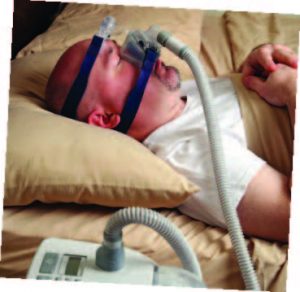 Link Between Sleep Disorders and Cancer Deaths
Link Between Sleep Disorders and Cancer Deaths
Sleep apnea sufferers have one more bit of bad news to add to their growing list. A study conducted in 2012 suggest that sleep-disorder breathing is associated with an increased risk of cancer mortality. This on top of increased risk of hypertension, cardiovascular disease and depression. Patients with severe sleep apnea had an incidence of cancer deaths five times higher than those without serious sleep-disorder breathing. “We are a long way from proving that sleep apnea causes cancer or contributes to its growth,” says Dr. F. Javier Nieto of the Wisconsin School of Medicine and Public Health—the lead scientist on the study and a sleep epidemiology expert. “But animal studies have shown that the intermittent hypoxia [an inadequate supply of oxygen] that characterizes sleep apnea promotes angiogenesis-increased vascular growth-and tumor growth. Our results suggest that SDB is also associated with an increased risk of cancer mortality in humans.”
 Environmental Factors Trigger Allergies in Newborns
Environmental Factors Trigger Allergies in Newborns
The idea that smoking while pregnant—or significant exposure to second-hand smoke—can trigger any number of problems in a newborn is widely accepted. In the case of allergies, now we know why. Two Iranian scientists from the Helmholtz Centre for Environmental Research recently released findings that show smoking affects the development of peripheral allergy-relevant stem cells in the blood. Their report, published in Clinical & Experimental Allergy, shows that one-year-olds with skin problems, such as dermatitis or cradle cap, had elevated levels of eosinophil progenitors in their blood. This establishes a relationship between the genetic predisposition for a disease and environmental influences. The conclusion the scientists drew is that, just because allergies run in a family, it doesn’t mean a child will suffer from those same allergies. The stem-cell findings prove that environmental and lifestyle factors actually determine whether a genetic predisposition is in fact realized or not.
 Holiday Baking: Shoulda Woulda Coulda
Holiday Baking: Shoulda Woulda Coulda
Don’t you love it when you hear how unhealthy holiday eating can be? Hopefully, your guilt has worn off and you’ve dropped an unwanted pound or two. But just in case, Utah State University has some tips for healthier baking. 1) Lower fat content by using plain yogurt instead of shortening or butter. 2) Replace icing with sifted confectioner’s sugar. 3) Add fiber to recipes by using a 50-50 mix of hard white wheat flour with regular flour. 4) Cut the amount of salt called for in baking by a third or half—it’s important from a taste and chemistry standpoint, so you can’t leave it out entirely. 5) Cut the sugar in recipes by 25%—you’ll barely notice the difference. Don’t think of these tips as “too little, too late.” Think of them as a recipe for success in 2013, and implement one every other month. By next December, you will be happier, healthier and guilt-free when the baked goods start rolling out of your oven.
 New Findings on Gluten-Free Foods
New Findings on Gluten-Free Foods
Back in December, the good folks at Guinness added a new entry in their Book of World Records: the largest gluten-free pizza. It covered more than a third of an acre and weighed more that 50,000 pounds. Given the recent proliferation of gluten-free foods on supermarket shelves, some have questioned whether there is actually a need for this type of product, or whether it’s just some new dietary fad. After all, fewer than 1% of people in the U.S. suffer from Celiac Disease, an autoimmune disorder of the small intestine triggered by exposure to gliadin, a protein found in wheat. So is wheat sensitivity among non-Celiac individuals real or imagined? A recent study published in the American Journal of Gastroenterology confirms what many in the field long suspected: non-Celiac wheat sensitivity not only exists as a distinct clinical condition, it shows up in people who already exhibit food hypersensitivity, as well as those who do not. “These findings are very important, and I hope to see more research in this area,” says Dr. Samiappan Muthusamy of the Center for Digestive Diseases. “For our patients with non-Celaic sprue gluten sensitivity disorder, we suggest they continue a gluten-free diet.”
 Raisin D’Etre
Raisin D’Etre
New data presented at the last American College of Cardiology scientific session suggest that a handful of raisins (not an apple) a day could keep the doctor away for those with mildly increased blood pressure or hypertension. Raisins contain a high amount of potassium—which is known to lower blood pressure—and are a good source of antioxidants, which have been shown to have a good effect on blood vessels. The study may lead to more ambitious trials on the positive impact of raisins on blood pressure. Until then, researchers suggest consuming 60 a day (about a handful). P.S. If you have a dog, please no sharing; vets haven’t figured out exactly why yet, but raisins (and grapes) appear to be toxic to canines.
What’s the ‘real’ cost of obesity?
By Lisa Milbrand
The line between social acceptance and social unacceptability can be a surprisingly fine one. Consider the smoker, once ubiquitous, who now encounters hostility whenever he or she lights up.
It’s one thing, after all, to ruin your own health. But as soon as the collateral damage of secondhand smoke was recognized—to our lungs and our pocketbooks—smokers were dead ducks.

Photo credit: iStockphoto/Thinkstock
Are the overweight next?
Laboring through the day with an extra 50 pounds is a chore. Absorbing the glances of pity or disgust each time a French fry crosses the lips is no fun, either. But what happens when the “real” costs of obesity are made clear to the American public?
There’s no question that obesity is on the rise here in the U.S. Currently, 60 percent of American adults are considered overweight. “And 30 percent are considered obese, where it causes a real medical problem,” adds Jim Dunleavy, PT, the Administrative Director of the Trinitas Health & Fitness Center. It’s not just our problem—the World Health Organization recently proclaimed that it now considers obesity a greater threat to humankind than hunger.

Photo credit: iStockphoto/Thinkstock
Furthermore, the impact of obesity goes beyond the health issues with which we are all too familiar, including skyrocketing rates of type-2 diabetes, coronary problems and other chronic and fatal diseases. Experts outside the world of medicine are now beginning to assess the cost of obesity in ways that impact everyone’s bottom line. Everything is on the table, from loss of productivity and increased risk of going on permanent disability, to the need to retrofit hospitals and build trains, planes and automobiles with wider seats, to an entirely new level of wheelchair accessibility in public and private spaces.
IT’S PUBLIC
Many inside the world of medicine feel that this is a discussion that needs to happen, if for no other reason than to create a more sophisticated level of public awareness.
“They’ve done a good job of showing the dangers of smoking, but obesity has to be the next thing they tackle,” says Gregory Charko, MD, an orthopedic surgeon at Orthopedic Physicians and Surgeons, P.C., in Union. “Everybody pays the cost for this; all health insurance premiums go up to cover the sickest people in the population. There’s a huge cost to the whole society when obese people are disabled prematurely and can’t participate in society, pay taxes and contribute.”
Some researchers have actually tried to put a number on the cost of obesity. They’re finding that about 20 percent of our annual health-care spending—or about$190 billion each year—goes toward treating obesity-related medical conditions. Yet that may be the tip of the iceberg. There are subtler ways we all pay—for instance, in our plane tickets, as airlines’ fuel costs have increased to account for the millions of gallons of extra fuel needed to transport the extra weight, and through governmental or hospital spending to retrofit public transportation and hospitals to accommodate the obese with extra-large seats, toilets that can withstand the excess weight and other accommodations.
We may also have to work harder as a result. “Obese people miss work more, so they cost employers more,” points out Penny Cappuccino, a registered dietitian at Trinitas. Some researchers peg that annual cost to employers at up to $30 billion per year.
IT’S PRIVATE
No one should be surprised if the public cost of obesity finds its way into the headlines more and more over the next few years. Hopefully, that won’t obscure the highest cost of America’s weight problem: the personal one. Almost every study shows that obese people shed years off their lives, and have much poorer health in their later lives than people with normal weight.
Much of this relates to the damage that excess weight can create on every system of the body, from the lungs to the legs. “Obese people are at very high risk of obstructive sleep apnea syndrome, as their throat narrows during sleep, causing oxygen levels to drop,” says Vipin Garg, MD, the Medical Director of Trinitas Sleep Disorders Center. “Low oxygen levels to the brain mean a person cannot get to deep sleep, and it affects all the other organs as well. It makes them more susceptible to heart disease, strokes, seizures and things of that nature.

Photo credit: iStockphoto/Thinkstock
And abdominal obesity moves the diaphragm up and stiffens the chest wall with fat around the ribcage, so the lungs aren’t able to fill with air as they would if the person wasn’t obese—that can lead to shortness of breath.”
“Obesity is also the top cause of knee replacement,” says Dr. Charko. “The force across your knee is three to five times your body weight, and if you’re morbidly obese, it just wears that joint down. If you’re over 300 pounds, you’re just carrying too much load for your skeleton, and it’s wearing out because of that increased load. Also, obese people are more prone to lower back degeneration, because of poor abdominal muscle tone.”
Chronic health conditions such as these can actually contribute to further weight gain and impairment of your health. “It’s a vicious cycle,” says Dr. Garg. “Once you’re obese, the one thing you’re supposed to do is exercise, and if you get short of breath with exertion, or have pain, you’ll exercise less—and you’ll get even more obese.”
Because of these chronic health conditions, many obese people become disabled and leave the workforce early. “They spend more of their lives disabled, their quality of life is diminished,” Dr. Charko says, “and they won’t be able to afford to do the things they want to do.”
IT’S PERSONAL
Beyond the social and financial costs of obesity are the ones that are sometimes hardest of all to fix—the psychological ones. “Obese kids may be ridiculed and bullied, and studies show that obese people may have fewer job opportunities and may be less likely to be given jobs,” says Cappuccino. Indeed, John Cawley, a heath economist at Cornell University, found that obese individuals are regularly paid less than their healthy-weight counterparts—to the tune of about 11 percent of their annual income.
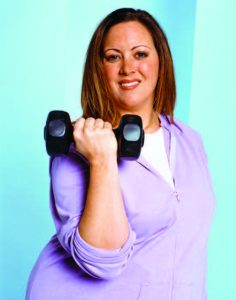
Photo credit: iStockphoto/Thinkstock
No matter how you look at it, we’re all losing due to society’s weight gain.
“We’re losing in terms of their health and the quality of life, but we’re losing in terms of how productive that person is and the number of working years they have,” says Dr. Garg. “It’s a big cost to society, when people are spending more time dependent than they are working.”
b When Lisa Milbrand’s not writing about health and wellness for EDGE, she is sharing advice on everything from wedding planning to child rearing as a magazine writer and blogger. If you know a couple haggling over baby names, send them to her In Name Only blog on parents.com.
Products with an EDGE
CLIP JOB
The Save Moneyclip offers sound advice every time you pay the piper. Available at uncommongoods.com.
 THIN IS IN
THIN IS IN
Security experts suggest keeping credit cards in a front pocket. The Slim Slimmy Wallet is made of soft, durable full-grain leather and bills itself as the thinnest credit-card wallet on earth. Available at koyono.com.
 PENNY WISE
PENNY WISE
Every deposit, no matter how small, is a financial decision with the Savvy Piggy Bank. Available at onestepahead.com.
 BEACH BRAG
BEACH BRAG
The super-sturdy 100% cotton About Tote Bag lets the world know you are always on the lookout for a bargain. Available at cafepress.com.
 WRAP PARTY
WRAP PARTY
Renew, reuse, recycle—that’s the message delivered by the Soft Metal Cosmetic Bag made by Maria Isabel Ramos and members of the Enchanted Wings. Available at uniquegufts-novica.com.
So you finally decided to bite the bullet and invest in a generator. Three experts weigh in on the questions you need to ask yourself before you buy.
By Mike Kennedy
When Hurricane Sandy made landfall on the Jersey Shore last October, Brian Difiore was prepared. Unlike the vast majority of his neighbors, five years ago he outfitted his house with a 17-kilowatt generator, a unit large enough to keep everything running in his home, including televisions and computers. “Our area was without power for nine days,” Difiore says. “I have three kids, a four-year- old, a two-year-old and a one-year-old. My wife would have gone crazy without the generator.”
Those neighbors should have taken notice of the work going on at the Difiore home. He lives at the business end of the Shrewsbury River, where storm surges can snap utility poles like matchsticks, and hurricanes such as Irene and Sandy can (and do) leave entire towns powerless. Oh, and he’s also the President of Mid-State Heating and Cooling, one of the larger electrical contractors in central New Jersey. Difiore’s father started the company back in 1968. His grandfather operated a similar business in the northern part of the state in the 1940s and 50s.
Steve Fortier, General Manager for Weltman Home Services, takes a similar view. Sandy left his neighborhood in High Bridge without power for a week. This wasn’t the first time he and his family had experienced a prolonged outage. In fact, the freak snowstorm that pummeled the northern half of New Jersey in 2011 helped convince him to get a portable generator, which made life after Sandy much more bearable.
“We ran it in six-hour increments,” says Fortier. “We used it for our fridge, heat, and hot water, and to keep our cell phones and laptops charged.”
Gary Marmo, Manager of Market Development for Elizabethtown Gas, doesn’t have a generator at his home. Sandy left his family without power for a few days. “We were lucky,” he says. “There was no real damage to the house.”
Marmo still isn’t sure he needs a generator. “It’s a personal choice,” he says. “It’s sort of like buying health insurance or life insurance. How secure do you want to feel?”
More and more New Jersey residents are asking that question since Sandy. In fact, Difiore believes the storm may have permanently altered the state’s housing market. “It used to be that air conditioning was not part of the basic package in new home construction,” he says. “Now it’s a standard feature. In the very near future, I think the same thing will happen with generators, especially in more affluent areas.”
Marmo agrees. “After Irene, we saw a significant increase in calls from customers in terms of home house generators,” he says. “Requests have been on the rise again since Sandy.”
For companies like Weltman and Mid-State, this has been a busy winter. Mid-State is a certified dealer for Generac, the brand of generator that Difiore uses at his home. Sales have been brisk, and so have installation and maintenance calls. “The market has taken off like a rocket,” says Difiore.
Weltman, which also carries Generac products, has also seen a spike in the generator marketplace. “It has been crazy,” says Fortier. “Everybody is looking into generators. They have lots of questions.”
Answers to those questions vary depending on multiple factors. We asked Difiore, Fortier and Marmo to put together a checklist of things to consider. They agreed that a consumer should consider five primary issues.
- How much power do I want?
According to Difiore, this is the first question that consumers should ask. Generators, he explains, range in size from portable units to the 17-kilowatt, whole-house model that powered his home after Sandy. “Do you want access to just the essentials?” he says. “Or do you want full integration where everything in your home is powered?”
Fortier says that portable units have drawbacks that whole-house units don’t. “They require gas to operate,” he explains. “Ours needed about 15 gallons to run for 15 or 16 hours. That can be a real problem when you have gas shortages like we experienced after Sandy.”
Fortier adds that there are ways to maximize your power supply. “A proper transfer switch can ensure that,” he says.
- How much do I want to spend?
Marmo points out that the decision to purchase a generator typically boils down to economics. “A small, portable unit from Home Depot or Lowes will probably be in the range of $500 to $1,000,” he says. “You can buy these right off the shelf. You see them on construction sites all the time. A full home house unit can be $10,000 to $20,000, which includes installation and permits. These sit outside your home and look very similar to a home air conditioning unit.”

Photo credit: iStockphoto/Thinkstock
Weltman typically walks its customers through the three primary decisions affecting the cost of a hard-wired generator: the size of the unit, the location of the unit and the number of circuits desired. “In general, the larger the generator and the more circuits you want,” Fortier explains, “the more expensive installation will be. Installing a unit farther from your home will increase the cost, too.”
- Where should I locate my generator?
Most people want a generator installed near their house, but that’s not always possible. “For example,” says Fortier, “you might have a deck or patio that makes that problematic. We’ve put generators up to 30 feet away from a home. That requires a lot more labor and supplies.”
Additionally, the location of a generator may be subject to zoning codes and electrical requirements. “Many towns are now re-evaluating the code process,” says Fortier. “Currently, the average time it takes to get the proper permits is four weeks.”
That has increased since Sandy, he adds.
- How handy am I?
First, it’s important to note that any generator—whether it’s portable or a whole-house unit—should be installed by a licensed contractor, and all towns require some sort of permit before work can begin. That being said, a generator also needs regular maintenance. “It is absolutely necessary,” says Marmo. “A generator is an engine just like in your car.”
Fortier echoes those thoughts. “Remember that a generator of any size is not built to run 24/7 seven days a week,” he says. “Any generator will break down faster if it’s operated continually.”
According to Difiore, Generac units reboot on a weekly basis and run for 12 minutes to charge the battery. That short period of usage alone makes maintenance essential. Difiore says the oil should be changed after 60 hours of operation and the fuel and oil filters should be replaced after 120 hours of operation. “But just doing the basics isn’t enough,” he adds. “These are engines that burn oil.”
That’s why Fortier and Difiore advise consumers to buy their generators from a licensed dealer who will also provide a service agreement. “We see a lot of people who buy their generators over the Internet, because that’s the cheapest way to get one,” Difiore says. “They may even do the installation themselves. Then a storm hits, and we get a call because the generator doesn’t work. We offer a full-service program that includes your first 90-day oil change.”
Fortier agrees with the need for regular maintenance. “You never know what you might find,” he says. “Maybe a chipmunk or squirrel is living in your generator.”
- How much noise can I tolerate?
Every generator is noisy; they average about 65 decibels. One of the advantages of larger units, offers Marmo, is they often run more quietly. “Noise isn’t as much of a factor because they come in a sound-proof enclosure,” he says.
Of course, a noisy generator will likely be the least of your worries the next time a catastrophic storm slams into New Jersey. Fortier was grateful to have a portable unit after Sandy and would like to upgrade to a whole-house generator. “We’re in the middle of a kitchen remodel, so it’s not in the cards right now,” he says. “But at a minimum, I advise people to get a portable unit.”
Editor’s Note: Mike Kennedy is EDGE’s Business Editor. He was born and raised in Ridgewood. Mike also edits the sports business website LicensingOutlook.com.
You think your boss stinks now? Just wait.
By Mark Stewart

Photo Credit: iStockphoto/Thinkstock
One in 75 home businesses will generate $1 million or more in 2013. The likelihood of a home business showing a profit over a 3-to-5 year period is double that of a traditional brick- and-mortar business. A recent poll of working-age Americans showed that roughly 7 in 10 would prefer to be self-employed. It seems like a no-brainer, right? Well, all I can say is be careful what you wish for.
As someone who has worked primarily out of a home office full-time for two decades, I have come to a couple of important conclusions. First, I am forever doomed to be one of the 74 people who isn’t bringing in a million a year. Second, I do know what I’m doing. I am successful in my field (publishing), my mortgage gets paid on time, the cupboards are full and I can’t recall the last time I had “nothing to do.” When my spouse or children invite guests over, they do not try to hide me, even unshaven, on my worst hair day. I guess the fact that I still have a wife and kids should count for something, too. I almost never get sick because my human contact is limited. And I don’t have a huge number of friends, probably for the same reason.
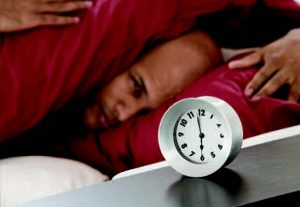
Photo Credit: iStockphoto/Thinkstock
It’s a life I thoroughly enjoy…however, not one I recommend to just anyone.
Invariably and somewhat regularly, I am asked by friends, acquaintances, business contacts and just random people for advice on starting or managing a home-based business. I may not be the brightest business person (my accountant is constantly reminding me of this) but as far as these folks are concerned, I have acquired enough experience to be of some use to them. Consequently, I feel comfortable answering questions, sharing anecdotes and insights, and encouraging them to be honest and introspective about whether they truly are cut out to work from home.
Over the years, I have developed a very personal and totally unscientific list of Do’s and Don’t’s for people considering a home-based business. Some are common sense, while others are the result of trial, error, experience, and additional error. So without further adieu, I present the full-time home-based business Gospel According to Me:
HABIT FORMING
• Wake up each day with a battle plan. No, make that Wake up each day prepared to go to war. This is the single greatest piece of advice I can offer, so why save it until last? The world owes you nothing; your home business is not guaranteed to survive. To succeed, you need to look back at the end of each day and be able to say, “I did everything I possibly could today to move my business forward.” It starts with an attitude, and includes intense focus, self-examination and discipline. It means making lists and crossing things off. It means using your time intelligently. It means not getting careless and shooting yourself in the foot. Like a soldier, you wake up every day prepared to go over the top and enter enemy territory. And like a soldier, when the sun goes down, you’re happy if you’ve gained a little ground and have lived to fight another day.
• If you wake up, get up. When you run a home-based-business, there is no official start to the workday. If you are able to sleep to 9:30, kudos to you. But if your eyes are wide open at 6:30 and you’re already thinking of new ideas, get out of bed and ease into the day.
• Dress before 10:00 a.m. It’s fine to start the day in your underwear, but at some point you will pass in front of a mirror and realize you look like a hobo. Getting dressed is a way of telling yourself it’s time to get serious.
• Make lists. Make a new list each morning, prioritize the items that absolutely must be accomplished that day, and cross them off as quickly as you can. The feeling of accomplishment comes when you start crossing off things below the must-do’s. As you think of new items, add them. If new tasks or opportunities arise during the day, add them, too. Even if you don’t get to them, they will be there in writing for you when you make your new list tomorrow.
• Shower or bathe at the end of each working day. Your significant other, offspring and pets will love you for it. More important, it helps wash away the working part of your day. It can happen at 4:30 or 7:00 or midnight—just don’t be tempted back to work after you’ve toweled off.
• Learn how to power down. This is the second-most important piece of advice I can offer. A high percentage of the people I know who failed to make a go of a home business (this includes a lot of freelance writers and editors) tell me that the thing they simply could not do was shut their brain off at night. When you work in a traditional place of business, you leave it physically and return home. Yes, some people take their jobs home with them, but there is a physical separation that gives them an opportunity to recharge and be mentally ready for the coming day. When your business is in your home, it’s harder to empty your head before it hits the pillow. If you toss and turn worrying about a client who owes you money, or whether an important phone call went well, or how you can tweak your social media presence, then you will crash into a wall the next day, accomplish less than you want, and toss and turn even more the next night. And there is only so much Ambien you can take.

Photo Credit: iStockphoto/Thinkstock
THE WORKSPACE
• Set up a clearly defined work area. It doesn’t have to be sealed off from the rest of the house, and it doesn’t have to be immaculate. But it must be a legitimate workspace. It tells you and everyone else that you are serious about getting things done when you are sitting or standing there.
• Set up a clearly defined storage area. You need a place to put things that are important to your business, but which you don’t need to access every day. Invest the time required to organize, label, alphabetize—whatever it takes so you don’t waste time retrieving these items.
• Establish boundaries. As the operator of a home-based business, accept the fact that you will never achieve church-and-state balance between home and business. There will always be spillover, especial if another family member is involved in your company. Nevertheless, explain openly and clearly to those who share your domicile that your home sometimes must adhere to basic rules of business, and that no one should take it personally if they feel ignored or underappreciated in some way. Also, your business workspace must be respected; it is not for them to use or disturb.
• Clear your line of sight. When you chose a primary workspace—the place where your attention cannot wander—remove family photos and other items that will tempt you to daydream or lose focus. You should never have a window directly in front of you, even if there is a computer screen between you and the window. It’s okay to keep these things near to you, just not right in front of you. By the way, having a clutter • Sound off. You do not need a soundtrack for your life. Eliminate any noise that distracts you, breaks your concentration, or diminishes your ability to be productive. Recognize that your iPod, stereo, radio and television could be your worst enemies. Silence is literally golden. If you are working hard, you won’t notice the lack of music or news chatter. I feel the same should be true of the noises that alert you to new emails, texts, tweets or Facebook entries. They create too many temptations. Keep your phone ringer on, that’s it.
• Choose a comfortable chair. A desk chair is like a pair of shoes. It’s worth spending a little time and money to find the right fit. Many a carpal tunnel case began with the wrong desk chair. The puffy leather reclining model at Staples may look good and feel great, but that doesn’t mean it’s the one you want. Start out with something that’s already around the house until you develop a sense of which features might enhance the way you interact with your workspace. In my case, I sit in a wooden armchair. Wheels and padding didn’t work for me. To each his own.
• Backup everything. Invest $100 in a computer backup device and learn how to use it properly. If a database is compromised or you lose a month’s worth of emails, the impact could cripple your business. I speak from experience.
• Get your phone situation straightened out. Designate at least one line and one physical phone to your business. If that phone rings, it’s business. If another phone rings, it’s not. You cannot imagine how this will reduce the anxiety and stress level in your home. If you have landlines, this is especially important. But even if you are an all-cell household, it enables you to “close your business” and devote yourself to family and personal matters when you need to.
• Don’t use the phone for business when the little ones are around. A business professional does noted workspace is no crime. Some people simply function better that way.
interact with others while toddlers are screaming in the background. The same goes for babies, teenagers, significant others, dogs and birds. Plan your phone time for when you have quiet time.
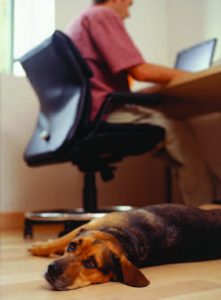
Photo Credit: iStockphoto/Thinkstock
BODY & SOUL
• Obtain insurance. Boring but important. If you do not have insurance coverage through another job or through a spouse, make this a priority. The peace of mind alone is worth it. Sadly, the cost of a half-decent health insurance plan in New Jersey for a small, independent home business is absolutely vulgar—$300 to $500 a week for a family of four. I am not a religious person, but in my 20 years of paying usurious, ever-escalating premiums, I have developed a belief system based on the idea that everyone in the health insurance industry will find themselves at the bottom of a fiery hole after they die. If I find out otherwise, I will be really disappointed. Did I mention that I’m not fond of health insurance companies?
• Watch what you eat. And how you eat. I have gone 10 hours without eating or drinking anything because I was so absorbed in my work. Other times I have consumed five full meals in a day out of sheer boredom. It’s a good idea to have a general plan when it comes to breakfast, lunch and dinner. That has helped me stay within 10 pounds or so—up or down—of the same weight for the past 20 years. If you tend toward unconscious or binge eating, recognize that your new workplace is attached to a kitchen, and that no one is there to watch in horror as you down a tub of ice cream at 11 in the morning. Self-control, please!
• Get regular exercise. This has always been a challenge for me. I don’t swim unless I’m drowning and I don’t run unless an animal is chasing me. I don’t like sports without a score and I have purchased at least three gym memberships in my life without ever actually having set foot in a gym. My solution was to set up an office in the attic of our house, and to take any opportunity I could think of to go to the basement or first floor, and then back up again. On an average day I’ll bet I go up and down 300 steps. My legs are like hardened steel (my belly is more molten). I have never had to blow $1,000 on a stairclimber. I am in pretty decent shape. That being said, I know someone who was so consciencious about regular exercise that she could not begin her day until she had completed the ritual of hitting the gym, showering, and eating a low-calorie breakfast. This was an admirable routine, except for one thing: These were her most alert and productive hours of the day. At 3:30 she was out of gas and worthless for anything other than menial tasks. Use your best judgment here.
• Don’t drink. There are many ways to reward yourself, and many ways to decompress. None of these ways should involve alcohol. At least one person I know has lost a business (and more) because he started drinking alone when he should have been working. I strongly suspect a couple of others I know stumbled down the same path. Once you are done for the day, cheers, go for it. It’s your life and it’s a free country. Yes, we all know Hemingway did his best work with a bottle next to the typewriter, but his own story didn’t end very well, did it?
TIME MANAGEMENT
• Stay off the Internet. It’s a tool. Use it intelligently. If you are not pursuing a goal relevant to your home business, leave the Overstock.com browsing, eBay bidding, eNews-reading, Facebooking and other stuff we won’t mention until you have officially called it quits for the day.
• Identify your most productive hours. On a good day, the human brain probably can muster about six hours of optimum performance. And like any other business, a home-based business can really wear you out. So do yourself a huge favor and recognize the times of day when you are “locked-in” and then plan your schedule accordingly. My mental engine starts firing on all cylinders around 10:30 in the morning and keeps going until 3:30 or so. Then sometime after 6:00 or 7:00 I get a second wind and can work right into the night. The key for me is to assign myself the most important tasks at those optimum hours, and to have dumb-dumb work to do before and in between. What’s dumb-dumb work? Putting things back where they belong. Doing basic research on the Internet. Compiling information on the marketplace or checking out the competition. Going to the post office or the bank.
• Make personal business into breaks. Everyone needs to take short breaks during the day. Avoid falling into the trap of turning on the TV or surfing the web aimlessly. You will lose too much valuable time. Instead, devote 10 or 15 minutes to taking care of personal business—throw a load in the wash, tighten the hinge on that cabinet, take out the garbage, floss.
• Use downtime to plan ahead. When you’re not busy, or you’re tired, or you just need to switch gears, use these moments to broaden the foundation of your home-based business. If you have made a business plan, it should include where you’d like to be in 6 months or a year or 18 months—along with the steps needed to get you there. Downtime is the right time to chip away at the tasks required to move you closer to your goals. This has been incredibly important to my business. There’s nothing worse than finishing one job and going, “Um, what do I do next?” I know what I’ll be doing two years from now—which is rare in my business. Trust me, it didn’t happen overnight!

Photo Credit: iStockphoto/Thinkstock
Home Business by the Numbers
There are more than 15 million home-based businesses in the U.S., and more than 10 percent of American homes are used in some way as a place of business. Women appear to make up a majority of the home-business “workforce.” Start-up costs for most home-based businesses are under $10,000. Many begin with less than $1,000. Some start with the shirt on their backs. Although much of the income generated by home businesses goes unreported, estimates of the amount of money made by people working from home are typically upwards of $400 billion a year. Fewer than 5% of successful home businesses leave the home and move into office or retail space.
Home Office Feng Shui
The Feng Shui of a home office is practical and should mimic that of most business offices. The office should set the scene for your transformation from relaxed resident to reliable and focused professional. When you walk in, you should feel as though you are entering a different world, so that your mind shifts from home-related matters to help you concentrate on work. Here are some Feng Shui do’s and don’t’s to create a positive work environment in your home office:
Do…
create a “professional” décor. Hang positive business mementoes on walls, in full view, to reinforce your identity as a successful and skilled worker.
Don’t…
have the room double as a multiuse venue, or it will be difficult to seriously concentrate on your work.
Do…
set up your desk so that all intruders—big or small, human or animal—can be seen, and thus you won’t be startled and distracted from your tasks. Similarly, the computer should sit so the user can easily see the door or room divider.
Don’t….
underestimate the value of bright lighting.

Photo Credit: iStockphoto/Thinkstock
Do…
hang a mirror so that you can see the view from your home-office window.
Don’t…
go overboard on organization. Yes, feng shui tenets stress the wisdom of a clean, efficient office, but this writer ascribes to the sage words: “Out of chaos, comes creativity.”
—Sarah Rossbach, author of Feng Shui: The Chinese Art of Placement and Interior Design with Feng Shui.
Editor’s Note: Mark Stewart has managed the EDGE editorial team since 2009. He also writes books for the school and library market, and runs a successful sports web site. He wrote this article in his wooden desk chair, at a computer set up against a wall with a blue abstract painting, surrounded by clutter, with no music playing.
24 North Ave. East, Cranford HOme • 908.276.3664
Reservations recommended.
Hours: Monday through Thursday from 11:30 a.m. to 10 p.m., Friday and Saturday from 11:30 a.m. to 11 p.m., Sunday from 11:30 a.m. to 9 p.m. All major credit cards accepted. Dress ranges from neat-casual to festive. Prices: Salads: $8 to $10.
Tapas: $6 to $14, with a mixed selection of tapas at $24. Cocas (mini pizzas): $8 to $10. Paellas and entrees: $18 to $26. Side dishes: $6. Desserts: $7.
In the end, the matter of the Red Velvet cake was the cherry on top of a sweet evening. Cervantes, a Portuguese-Spanish restaurant in Cranford known more formally as Cervantes of Spain, is the real deal –an Iberian destination that tips to approachable authenticity. Its menu bursts with the key foods of the peninsula, from pulpo (octopus) to piquillos (the sweetest roasted red peppers on the planet) to pimenton (smoky, sometimes hot paprika) to potatoes in all forms (mashed and shaped into croquettes, fried like chips, cubed and tossed with jazzed-up aioli). It’s got a near-arm’s-length list of tapas familiar to anyone who has traveled in either Portugal or Spain or been to a big-city Iberian spot; a couple of Mediterranean-style pizzas; more than a half-dozen cauldrons of paella on tap; and a lineup of mild-mannered entrees that gently guide those schooled primarily in Italian or French cuisines into a related realm.
My Portuguese friend is enchanted. My Yankee/Joisey pals are too busy snatching seconds and thirds of the tapas to speak. As the table is re-set for entrees, they gulp and say, “You mean we have to eat more?”
Well, we did skip the Red Velvet Cake – yes, all-American Red Velvet Cake – but let’s talk about the really good stuff first.
Properly conceived and executed tapas, the small plates of Iberia, are more substantial, less precious than many modern American appetizers. Thoughtfully ordered, eight tapas can be a satisfying supper for a party of four. Here at Cervantes, where the bountiful plates of tapas range in price from $6 to $14, you get value and variety on top of roundly flavorful, easy-eating small plates.

Photo credit: iStockphot/Thinkstock
Take that octopus—and don’t be put off by the thought of an eight-armed sea creature. As prepared at Cervantes, it’s quite like all that calamari you’ve inhaled. Only its larger chunks of soft meat aren’t fried, but slowly stewed with Yukon Gold potatoes in olive oil and that smoky, sensuous pimenton. A fan of the classic Italian dish of scampi? Well, here, shrimp are similarly sautéed, perhaps with a more buttery olive oil than the often bitter ones from Italy and an extra teaspoon or two of minced garlic. With hunks of bread to sop up the sauce, you’re golden.
I was feeling mighty sunny myself as I poked through the poached egg sitting atop the dish of duck confit and potato hash and let the runny yolk ooze throughout the dish. Poached egg atop any meat is pure Portuguese, and knowing Cervantes served this riff on a classic was one of the reasons I’d called this dinner to order. Have this, learn from it and make it at home for company from, for the most part, prepared ingredients.

Photo credit: iStockphot/Thinkstock
Cervantes’ chorizo is what Iberians call their very own: It’s not stoked with heat, like some Mexican and American chorizo, but dense, rather than crumbly, deeply meaty rather highly seasoned. It’s served in a rich Rioja reduction that demands bread, or fried potatoes, and it’s yet another tapa that, combined with a vegetable, could do nicely as supper.
Whatever you do, don’t miss the patatas bravas at Cervantes. Think warmed potato salad dressed in a pimenton-licked aioli, a smoother, eggier take on mayonnaise. Six bucks! Heck, after you’ve tried it, you’ll want to buy it in bulk and put it on the menu for Fourth of July. The only miss on the tapas list were the two types of potato croquettes we tried, and not because the mashed spuds weren’t warm and fuzzy fun: The promised chicken in one, and the serrano ham in the other, were MIA in most of the gently fried balls delivered to us.
It’s hard to top good-eating tapas even in Spain and Portugal. My times on the tapas trails rarely were followed by entrees even half as memorable. But do check out Cervantes’ slow-roasted suckling pig, all gussied up in a chic tian of a presentation, a molded round of layered garlicky potatoes topped by carefully assembled meat that tasted like mild pulled pork. There’s a hint of orange in it, a tout to the Valencias so prevalent in the homeland, and that’s the dominant seasoning. Nicely cooked chicken breasts, with just a quick hit of lemon and a deft glaze of Rioja, were light on garlic and olive oil—and rightly so.
Pass on the traditional paella, plumped with chorizo, chicken, shellfish and vegetables: Like far too many paellas, it had overcooked clams, shrimp and lobster and dried-out rice. At $26, it’s also one of the higher-priced items on the menu. We took a chance on the daily fish special, sole in a standard-issue lemon-caper sauce. No need for you to do the same.
If luck is on your side, you’ll get our server, the gent from Lyon (yes, the one in France), who will shake off your request for Red Velvet Cake like a pitcher on the mound rejecting the catcher’s call. I had to ask: Why Red Velvet Cake on an authentic Portuguese-Spanish menu?M. Lyon shook his head. Come on, I beg, whose idea was this? Another shake of the head. Who is the chef?A very talented fellow from Mexico, M. Lyon said, though he didn’t know his name. OK, I say, I want to try this Red Velvet Cake. An even more violent shake of the head ensued.
We locked eyes.
“No, Miss,” M. Lyon said to me. “Not here.”
I was happy M. Lyon wasn’t a complete company man. Frankly, I don’t want to eat Red Velvet Cake in an Iberian restaurant any more than I want to eat patatas bravas at a catfish fry in Mississippi.
So we enjoyed a crunchy-crusted, orange-scented crème brulée (yes, my Portuguese pal said, crème brulée is served over there) and one of the few understated tres leches cakes (hey, our world is one big table these days) I’ve ever eaten.
And all the way home, we plotted our next round of tapas at Cervantes.
 Cervantes is located in a modest brick structure astride the train station in Cranford. (Come after 6 p.m., we were advised, and parking is free in the train station lot.) It’s part bar/lounge, where there’s often a lively happy hour, and part dining room. When the weather’s amenable, there’s a patio for outdoor dining. Imagine sipping cava, Spain’s sparkling wine, on that patio this summer as a prelude to a round of tapas.
Cervantes is located in a modest brick structure astride the train station in Cranford. (Come after 6 p.m., we were advised, and parking is free in the train station lot.) It’s part bar/lounge, where there’s often a lively happy hour, and part dining room. When the weather’s amenable, there’s a patio for outdoor dining. Imagine sipping cava, Spain’s sparkling wine, on that patio this summer as a prelude to a round of tapas.
Problem is, on the night of our visit, only one cava was offered on the wine list. (And the producer’s name wasn’t even given.) Bringing in bubblies that are so right with a diverse selection of tapas would not only do justice to the food, but better serve diners’ needs.
Editor’s Note: Andy Clurfeld is a former editor of Zagat New Jersey. The longtime food critic for the Asbury Park Press also has been published in Gourmet, Saveur and Town & Country, and on epicurious.com. Her post-Sandy stories for NBCNewYork.com rank among the finest media reporting on the superstorm’s aftermath and recovery.
Who knew? Behind the gentle, sensitive blue-eyed preppy we all took Andrew McCarthy to be, there beat the heart of an introspective adventurer and master storyteller? In his second life as a globetrotting journalist, McCarthy has contributed to National Geographic Traveler, Travel+Leisure, The Wall Street Journal and The New York Times. He also authored The Longest Way Home: One Man’s Quest for the Courage to Settle Down. EDGE Editor at Large Tracey Smith set out to determine when, why and how this Garden Stater transitioned from beloved actor to best-selling writer. As she discovered, these are merely two facets of the same glittering artist.
EDGE: It takes a tough skin to be an actor and to be able to put yourself out there, in front of people. When you look back at your career what enables you to do both?
AM: I don’t know if it takes a tough skin, but to have one it helps. Most people who go into acting probably don’t have one. I guess you develop one over time—
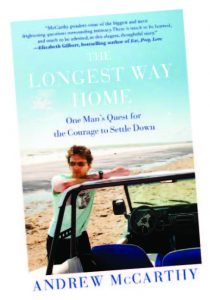
Photo courtesy of Free Press
or you just get beaten up enough and grow immune. I cannot imagine what else I would do, I’m not qualified to do anything but act. When I was a kid and discovered acting, I was 16, in high school. I was in my first play, and I had an amazing experience. I felt at home with myself, like I had never felt before, and the decision was made in that instant that there was no decision to make. It was just something I was going to do.
EDGE: Did writing hold the same kind of appeal?
AM: It was a similar feeling of relief, a feeling of being at home with myself. I have been lucky to say that my passions have become my jobs, which is a good thing—and I don’t know any way else to do it.
EDGE: Your travel writing tends to take you to the ends of the earth. Is that something you’ve done consciously?
AM: I find remote destinations interesting. I’m looking to be placed outside my comfort zone. I live in the city, so I like going to the Sahara Desert or Patagonia. Those kinds of extreme places really get my attention and wake me up in a way. It’s important to travel the world. It’s sort of a responsibility to see and experience as much of the world as we can. It makes us better people and more responsible global citizens, as it were. And also I find it’s fun as hell, too! I have a globe in my house and sometimes I just sit and sort of spin it. When I find a spot I don’t know about, often that’s reason enough for me to just get on a plane and go.
EDGE: Do you feel like a different person when you return from one of these adventures?
AM: Paul Theroux said, “You go away for a long time and return a different person…you never come all the way back.” In a certain respect that’s true. I’m an accumulation of whatever has happened to me—whether I am on the road or whether I am home. I find I am a better version of myself when I’m on the road. I’m more interested, I’m more curious, more open, braver, more engaged, more right-sized. When you get home it actually seems as if the effects wear off instantaneously. But the real changes, the deeper changes, go much deeper than that. They’re much more substantial.
EDGE: Is your family fully behind your new career?
AM: They are pretty aware that it’s the thing for me to do. Some people like to go to the gym. I like to go to Ethiopia (laughs).
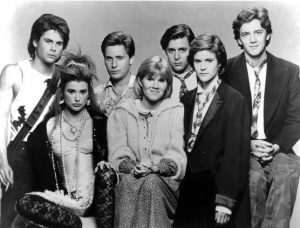
Photo courtesy of Columbia Pictures
EDGE: Has your travel writing fine-tuned your acting in any way?
AM: On a human level, it’s made me more relaxed in the world, and the more relaxed you are as an actor the better you are as an actor. Laurence Olivier said the key to acting is relaxation. So travel has opened me to be more relaxed in myself and how I deal with the world. And it’s helped my observational skills, which is what acting is all about. I think it makes me more awake and alive. And whenever you’re more awake you’re a better actor.
EDGE: I’m guessing a lot of your fans are anxious to know whether you are close with any of the actors you worked with in your “Brat Pack” days.
AM: I don’t keep in active touch with any of them. That’s the power of movies, you know, just to freeze a moment of time. We were so public at that time. People took a snapshot of us and they hold on to that snapshot. Everyone evolves from their 20’s to when they’re in their 40’s, so hopefully we are all evolving. When I look at these people from afar, I see them doing all sorts of interesting things with their careers. For instance, Emilio Estevez has gone on to direct some very interesting movies. The Way [co-starring his father, Martin Sheen] was just a very lovely movie.
EDGE: When you look into your crystal ball, what do you see five years from now? Do you want to be a playwright?Write a biography?
AM: Write a biography about someone else? No, I don’t see myself ever doing that. I do have a novel that I have been finishing and also an idea for another non-fiction book. Things just seem to have a natural evolution as they present themselves, so I try to pay attention and follow that. I’ve never been one of those people who has a good five-year plan. Whenever I do, it gets completely derailed.
EDGE: Mark Twain maintained that, 20 years from now, you will be more disappointed by the things you didn’t do than by the ones you did do. “So throw off the bowlines, sail away from the safe harbor. Catch the trade winds in your sails. Explore. Dream. Discover.” Would you agree?
AM: Yeah, I think that’s very true. And that’s the thing that travel does, it obliterates fear. It did in my life. I think that’s 95 percent of what Twain is talking about. Fear is not a viable thing to dictate our behavior. It does too often. It’s a wet blanket. Fear complicates your success. And it masquerades as many things. The challenge is identifying fear, whatever that fear may be. EDGE
Editor’s Note: The Longest Way Home (2012, Free Press) will be available in paperback this spring. In its review of the book, The New York Times described it as “a good book about a good man who’s trying good and hard to figure himself out.” Andrew grew up in Westfield and Bernardsville. He lives in New York City with his wife and daughter.

